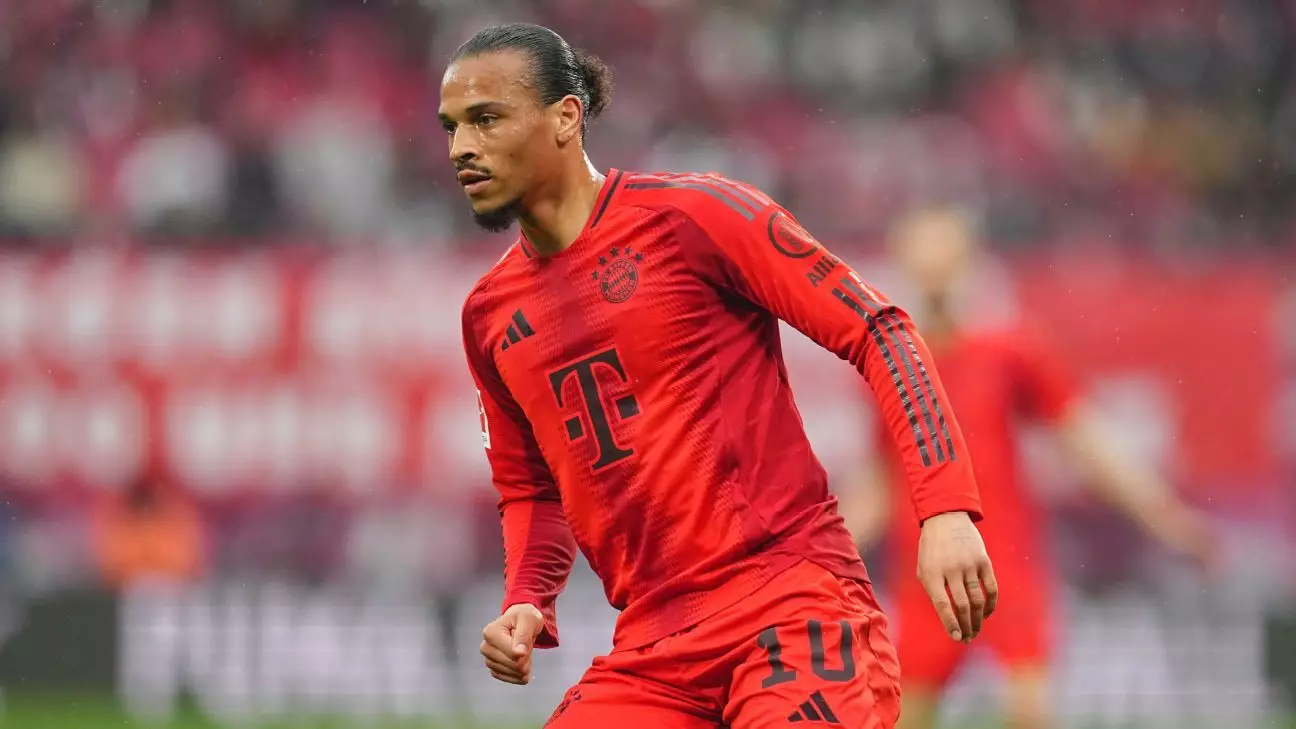In the most recent saga of football transfers, the spotlight is glaringly fixed on Leroy Sané, the explosive winger from Bayern Munich who might find himself donning the iconic colors of Barcelona. As both clubs are embroiled in discussions, whispers of a lucrative free transfer in the upcoming summer have captured the attention of fans and analysts alike. Insights suggest that Barcelona, keen to fortify their roster after fluctuating performances, view Sané as an enticing option given his stellar contributions in the Bundesliga—boasting 15 goals over 28 appearances this season.
Such a transfer would not only add depth to Barcelona’s attacking arsenal but also ignite excitement among supporters who remember Sané’s dazzling appearances on the pitch under coach Hansi Flick. The intricate web of football, laden with the unpredictability of player moves, makes this potential signing feel almost poetic. After all, bringing in a player of Sané’s caliber could signal the Blaugrana’s intent to return to their historical heights in European competitions.
Yet, this pursuit also reflects a larger trend: the chase for premier talent by clubs attempting to regain their former glory. In an era where player retention is a challenging endeavor, acquiring Sané on a free could be an astute move, marrying financial prudence with a strategic fit—ideal for a club navigating the tumultuous waters of post-Messi identity.
Manchester United’s Forward Thinking with Victor Osimhen
Meanwhile, Manchester United appears to be orchestrating a strategic play in pursuit of Victor Osimhen, the Nigerian forward currently on loan at Galatasaray. With whispers of talks already underway between the club and Osimhen’s representatives, the prospect of securing a player of his lineage is tantalizing for Red Devils fans yearning for a rejuvenated frontline.
What’s intriguing here is the meticulous planning evident in the negotiations. Osimhen, upon returning to Napoli, may find himself at a crossroads—ESPN reports that a price tag exceeding €75 million will be attached to the star. Manchester United’s interest delineates a carefully thought-out strategy to bolster their squad as they rebuild. As Osimhen stands out with his goal-scoring prowess and physical style of play, he could seamlessly fit into the modern tactical framework that manager Erik ten Hag is establishing.
However, one has to ask whether a significant financial outlay for Osimhen is the solution to United’s prolific woes in front of goal. This decision embodies the dichotomy between buying established talent and investing in developing youth, a challenge many big clubs must navigate in today’s football landscape.
Shifting Dynamics: Alejandro Garnacho and Competitive Interests
In the midst of this transfer cacophony, Alejandro Garnacho’s future seems equally speculative. The Manchester United winger has made headlines as Chelsea maintains a keen eye on securing his services, fueling chatter about his potential departure. With an asking price reported at £65 million, Garnacho’s youthful exuberance combined with his on-field contributions have rendered him a sought-after asset.
Here lies a contemplative dilemma: while retaining homegrown talent serves to endear clubs to their supporter base, the financial implications often scream for pragmatism. With United’s several high-profile exits on the horizon, the emergence of Garnacho as a potential cornerstone player is both a source of optimism and anxiety. The delicate dance between opportunity and obligation is a consistent theme in football, forcing clubs like Manchester United to wisely balance their investments.
International Grounds: The Rise of Global Interest
Stepping beyond the borders of European powerhouses, we see Al Nassr making waves with their ambition to sign Feyenoord’s Dávid Hancko, challenging major players like Atlético Madrid in the process. The uptick in interest from clubs in the Middle East for established European players signifies an evolving landscape in football. The offered €32.5 million for Hancko reflects an eagerness to not only build a competitive team but also to attract global talent to burgeoning leagues.
In this context, the allure of joining a well-funded club like Al Nassr provides intriguing incentives for players who might otherwise see their career paths confined to traditional European arenas. The reallocation of talent also prompts deeper conversations about leagues’ influence and the globalization of football.
Jorginho’s Brazilian Return: Full Circle for the Midfield Maestro
As we continue to track player movements, the conclusion of Jorginho’s journey at Arsenal, culminating in a pre-contract arrangement with Flamengo, presents a compelling narrative of return. After contributing significantly to the Gunners’ campaign, his transition back to Brazil serves not just as a personal homecoming but as a testament to the cyclical nature of football careers.
The Brazilian international’s move signifies the importance of players embracing their roots amidst a career filled with top-flight ambitions. Agreements like this often provide a fresh lease on a player’s career and promote a deeper, emotional connection between the athlete and the club—far beyond the mere transactional relationships often viewed in professional sports today.
As these stories unfold across the globe, football enthusiasts are treated to an evolving spectacle, forever reminding us that the beautiful game often thrives on unpredictability, ambition, and the human element that fundamentally drives sport.

Leave a Reply